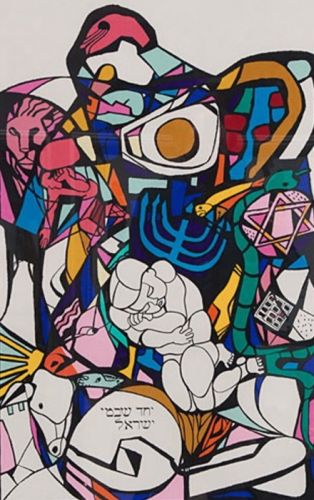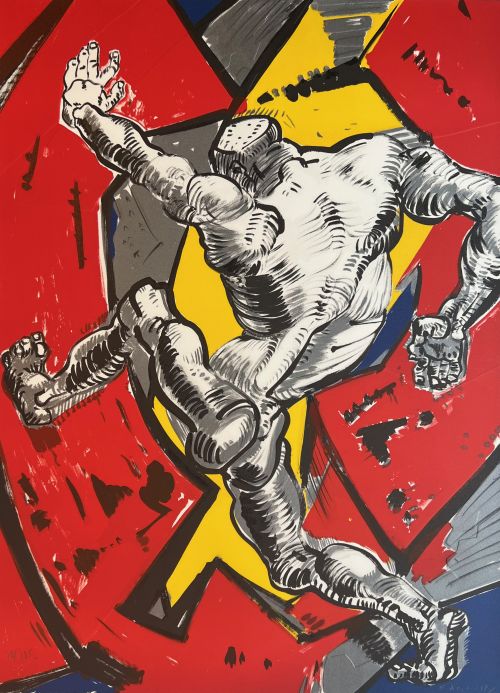About the artist:
Soviet-American artist and sculptor, a leading representative of the "Nonconformism" art movement.
In 1947, Neizvestny was enrolled at the Academy of Arts in Riga. He continued his education at the Surikov
Moscow Art Institutute and the Philosophy Department of the Moscow State University. Shortly after graduation
he became a member of the Union of Soviet Artists, working prolifically (although many of his works from this
period were destroyed as "degenerated" and ideologically incorrect), exhibiting at numerous exhibitions and
being awarded in national and international competitions, such as the Fourth International Festival of Youth and
Students in Moscow (1957) or the International Dante Competition (1965).
In 1962, at an exhibition of avant-garde art at The Moscow’s Manege exhibition hall, Neizvestny decried Nikita
Khrushchev for having described his work as ‘degenerate’. Ironically, when Khrushchev died in 1971, his family
commissioned him to design his tombstone, which now sits at Moscow’s Novodevichy Cemetery.
Monuments and sculptures by Neizvestny can be found in cities across the world including Rome, Geneva,
Stockholm, New York, Perm and Moscow.
One of the artist’s best-known works is "The Mask of Sorrow" from 1996 (located in Magadan), dedicated to the
victims of political repression in Soviet Russia. Ernst Neizvestny's sculptures, often based on the forms of the
human body, are noted for their expressionism and powerful plasticity.
Although his preferred material is bronze, his larger, monumental installations are often executed in concrete.
Most of his artworks are arranged in extensive cycles, the best known of which is "The Tree of Life", a theme he
has developed since 1956.
In 1976, the artist was compelled into exile, and after a few months in Zurich, he settled in New York.
During the following years, Neizvestny executed a number of spectacular monuments and significant sculptures,
including "Heart of Christ" (1983) or a series of "Statues of Liberty" (1988) situated in Taiwan.
Besides sculpture, Neizvestny developed a compelling repertoire of illustrations, including the visual interpretation
of Dante, Dostoyevsky or "Book of Job".
During the 1980s, Neizvestny was a visiting lecturer at the University of Oregon and at UC Berkeley. He also
worked with Magna Gallery in San Francisco, and had a number of shows which were well-attended in the mid to
late 1980s. This gallery also asked him to create his suite of five original lithographs, "The Man through the Wall,"
to mark the end of Communism at the end of the 1980s.
By artist's sketches was made the main prize of TEFI (The All-Russian TV contest) - statuette of "Orpheus", is a
Greek singer and musician, playing on the strings of his soul. The original two-meter "Orpheus" is stored in the
artist's studio in New York, and a copy became the TEFI prize.
Sculptures and paintings by Ernst Neizvestny are included in important museum collections, such as the MoMA
and Jewish Museum in New York, Museum of Modern Art in Tel-Aviv, Moderna Museet in Stockholm or Museum
of Modern Art in Paris.





